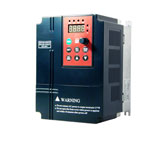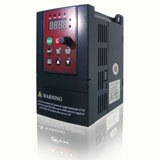Variable speed drive on reciprocating compressors
Reciprocating compressors usual have pretty large load torque variations with every cycle, some can be up to 50-60% or the average torque. The machine is busily slamming current in and out in order to keep up with the transient torques. While using flywheels or large rotor inertia to damp out the load dynamics is pretty cool and an art form in and of itself, somewhere along the line, making huge flywheels to damp out the transients seems silly. We had done some work where the mechanical engineer threw his hand up because the flywheel was too big to manufacture. Turns out that the fly wheel design procedure was much too conservative and overdesigned the flywheel. But the point is: why have a huge hunk of steel attached to the shaft all the time?
If the motor is being driven by a variable speed drive with sophisticated drive algorithms, i.e. controllers that can track the load torque variations, then both the efficiency and transient stability problems can be solved together.
The other significant thing is the starting problem. The transient load torque is also present at starting so the motor has to be able to accelerate through the load transients and be capable of starting when the compressor is sitting at the highest load.
Other than efficiency, which is a huge life cycle cost factor for a machine that runs 24 /7, there is no manufacturer for a slow speed (think 224 RPM / 32 pole / 60Hz) induction motor at above 8,000 HP.
A common application for an large reciprocating is in the PetroChemical Industry where I sold some in the 20,000+ HP range. The synchronous motor can overcome torque pulsations somewhat with a large flywheel. The Synch Motor is the standard for this application even if starting systems may be required.
If the motor is being driven by a variable speed drive with sophisticated drive algorithms, i.e. controllers that can track the load torque variations, then both the efficiency and transient stability problems can be solved together.
The other significant thing is the starting problem. The transient load torque is also present at starting so the motor has to be able to accelerate through the load transients and be capable of starting when the compressor is sitting at the highest load.
Other than efficiency, which is a huge life cycle cost factor for a machine that runs 24 /7, there is no manufacturer for a slow speed (think 224 RPM / 32 pole / 60Hz) induction motor at above 8,000 HP.
A common application for an large reciprocating is in the PetroChemical Industry where I sold some in the 20,000+ HP range. The synchronous motor can overcome torque pulsations somewhat with a large flywheel. The Synch Motor is the standard for this application even if starting systems may be required.



